Location

The Upper Vjosa Valley is situated in the region of Përmet, South-East Albania.
Responsible partner: CeRPHAAL
Cross-border pilot connected to pilot 7. Aoos, the shared river
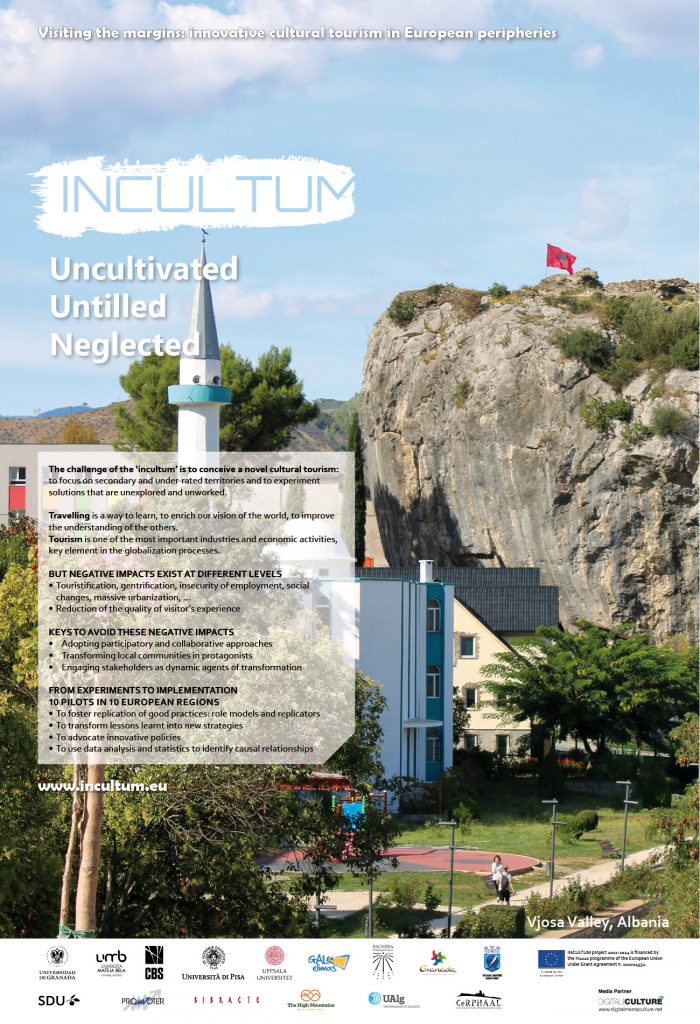
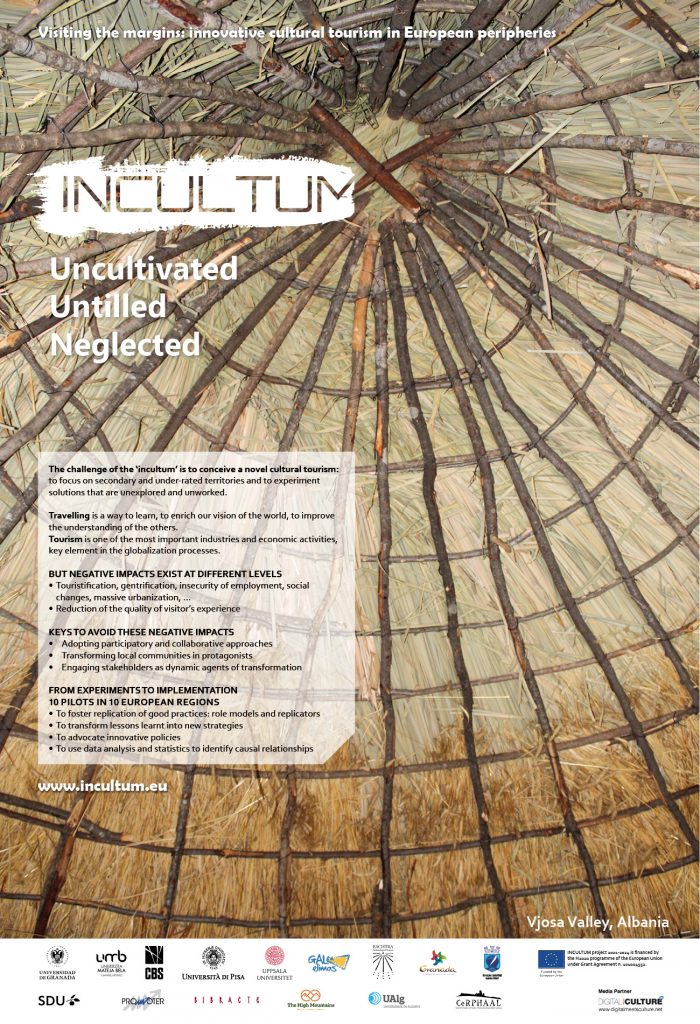

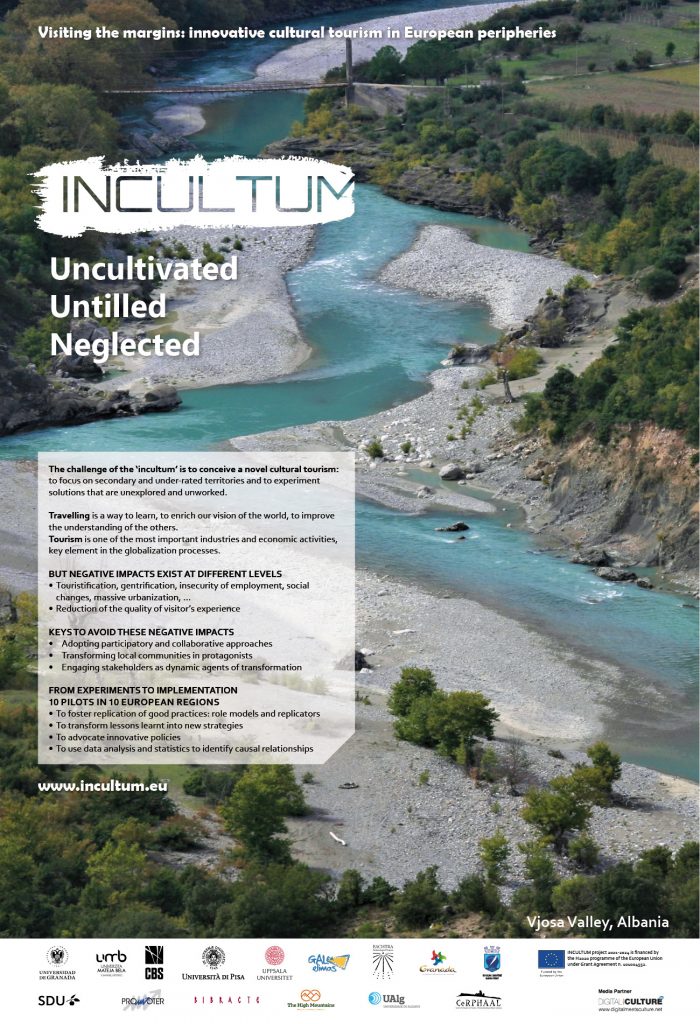
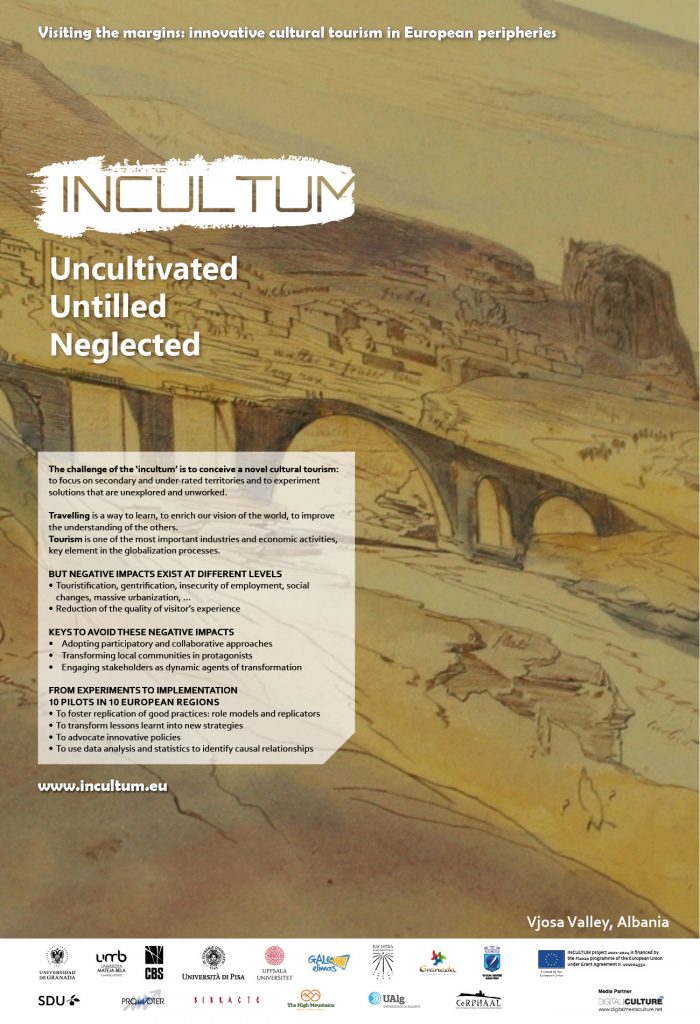
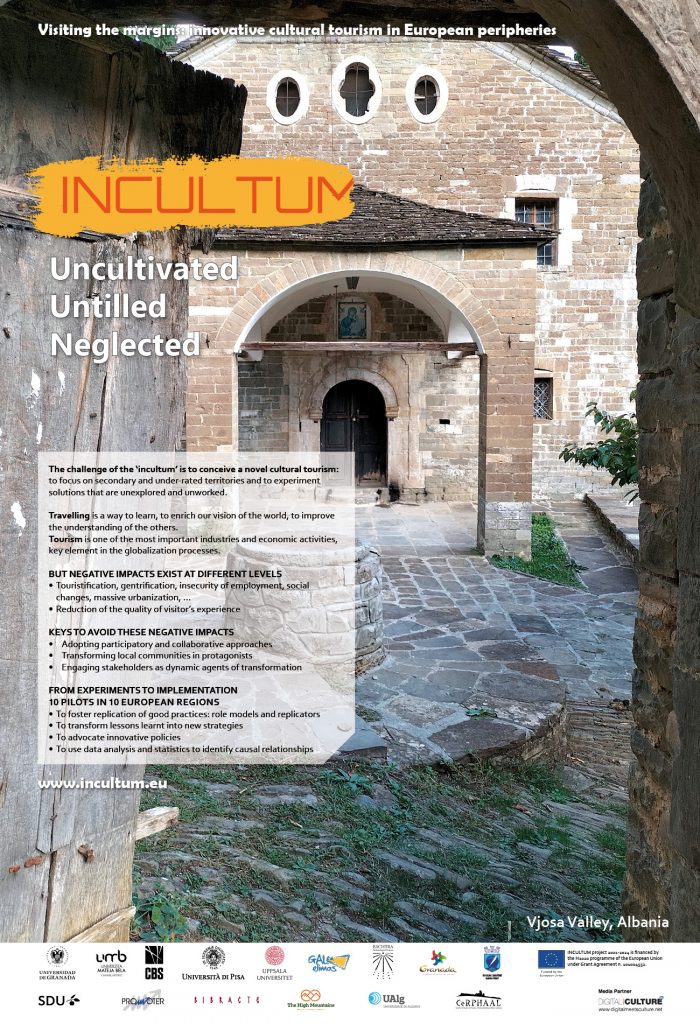
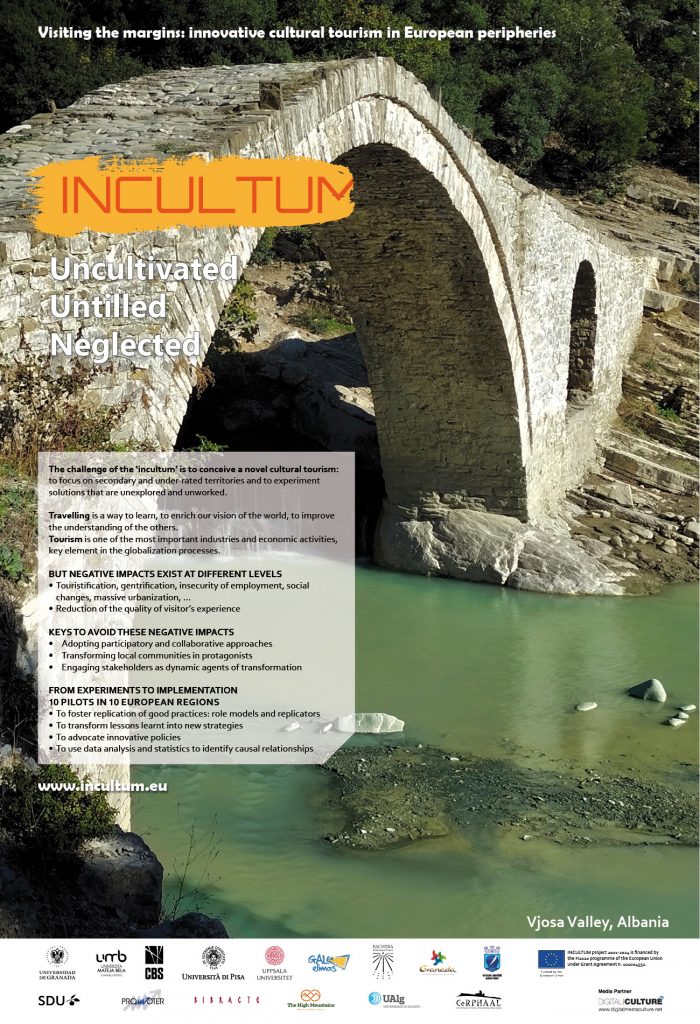
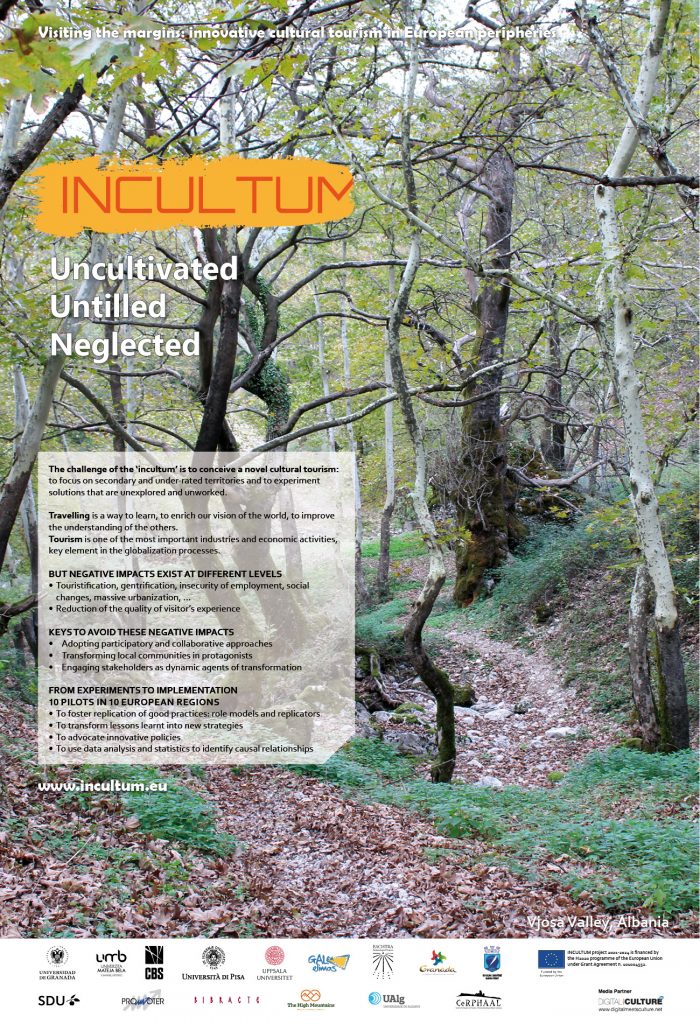
Promotional flyers
Context
The Vjosa/Aoos River, considered as ‘one of Europe’s last living wild rivers’, springs from Mt. Pindus in Greece, enters Albania at the border crossing point of Tre Urat (Three Bridges), and continues up to the Gorge of Këlcyra, which defines the northern extreme of the Upper Vjosa Valley. On both sides of the river banks, extends a terrain of agrarian field terraces alternated with hilly lands of rich Mediterranean vegetation where the traditional settlements are situated, followed by high mountain massifs dominated by continental climate with rich water sources, forests, flora and fauna, and broad prominent pastures. The archaeological data suggests a long-term occupation of the area, where communities have left a rich legacy of material culture and also shaped the landscape in accordance with their needs. On the other hand, the dynamics of historical events have influenced the existence of diverse ethnical minorities, such as Vlachs, Greeks, etc. During the Italo-Greek conflict in World War II, the valley was heavily militarized and some of the major battles of the Epirus front also took place there. The landscape suffered a drastic transformation during the communist regime of 1944-1990 due to a profound and accelerated industrialization of urban (mainly food processing) and rural economy (including the establishment of cooperatives), whereas the national policy of unification, on the other side, subjugated the cultural identities of the Upper Vjosa Valley; in addition, due also to the ‘Cold War’ the area was intensely militarized by the construction of bunkers, trenches, barbed-wire fences, etc. The political-economic-social changes following the fall of the communist regime in the 1990’s are still present and reflected today in the abandonment of villages, decline of industries or their fragmentation into small familiar food processing workshops situated in the town. Accompanied by increasing unemployment, all this has affected particularly the youth and women. At present, however, there exists a tendency for overcoming the situation by taking advantage of the natural and cultural touristic potential of the area; nevertheless, the policies and strategies for a local sustainable tourism development remain fragmented, short-termed and incomplete.
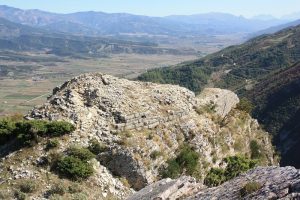
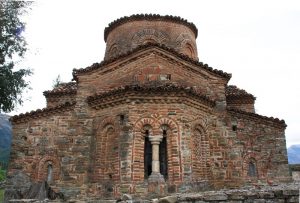
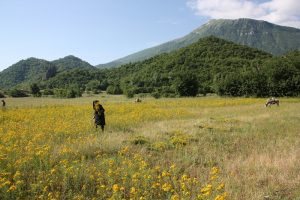
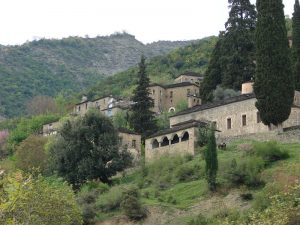



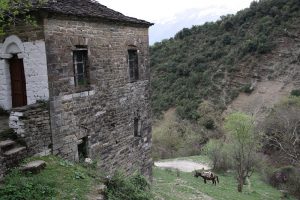
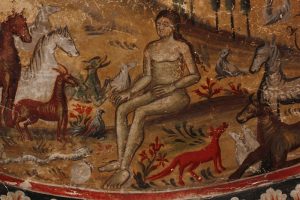
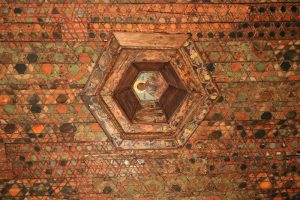
Actions
Exploring new paths and exploiting the ‘hidden’ potential of cultural heritage and landscape assets of the Upper Vjosa Valley, and also attempting to balance experiences on both Albanian and Greek territories, by focusing on: the tangible and intangible cultural heritage of the historic nomadic Latin-speaking Vlach community, including their transhumance routes and seasonal pastoral settlements; the archaeological, historical and natural sites (both urban and rural) including the traditional villages and their communication routes, byzantine and post-byzantine churches, and etc.; and the military and industrial remains/existing factories in the Përmet area and beyond. All these are important parts of local heritage, people’s identities and history of the area, but currently being marginalized/abandoned and lagged behind, due to globalization, regional weak promotion/preservation policies and the negligence and exclusion from the policies of ‘classical tourism’.
Communities involved
Direct engagement of the people of Vlach, as well as those of the other local communities, by giving priority to their crucial participation, and in particular of women (as in the case of industrial heritage), as well as the young generation and school pupils.
Expected results
The up-front participation of local communities of the valley in tourism will help towards creating new job opportunities. In addition, new sites, natural areas and a diversified category of monuments along with the ‘rediscovered’ old tracks and historical routes will be incorporated into the tourism management plans and agendas. In addition, the establishment of sustainable future tourism policies that relies on continuous interaction of public become a whole cultural touristic area.
Associated partners
Local public institutions and other SME working in agro-tourism, in Përmet area, Albania.
Cross border and international nature of the pilot case
The cross border Vjosa Valley pilot case is linked to the regions of Përmet in Albania and Konitsa in Greece.
Innovations
Promoting in situ traditional practices, straightforward interaction and learning by experiencing.
Creating a virtual network of various local actors and tourists by sharing information through social media.
Providing online downloadable GIS/GPS data along with other information tools in the form of virtual guides and tour packages related to single or combined sites, areas and routes.
‘Defragmenting’ the heritage assets of the Vjosa Valley by creating an ensemble of cultural richnesses and
a virtual touristic area that extends beyond the state borders.
Build policies and strategies that rely on continuous interaction of public bodies, NGO, SME and communities on both sides of the valley’s state borders.





